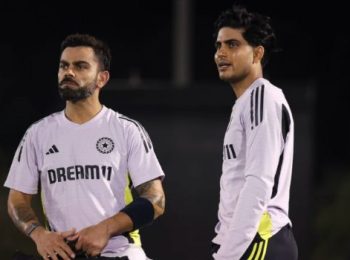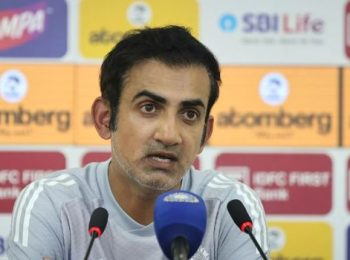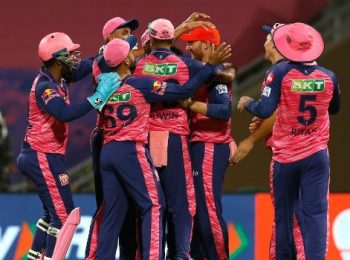England head into the first Ashes Test with what feels like a massive opportunity, largely because of the injury-enforced absence of Josh Hazlewood alongside Pat Cummins. That combination instantly shifts some pressure and expectation onto England, even if they themselves may not necessarily feel it. One of their strengths in recent times has been their ability to push pressure and expectation to one side, to play with freedom regardless of the stakes. Still, the opportunity is undeniable. With Australia missing both Cummins and Hazlewood, England will be fully aware that if they fail to win this match, the rest of the series is only going to become much tougher. The assumption remains that both Hazlewood and Cummins will return by the second Test—certainly Cummins and possibly Hazlewood. Once that happens, the difficulty level will spike significantly. Therefore, psychologically, this first Test intensifies things a little bit for England.
I would have liked to see them play a proper warm-up match, but preparing for a series like this is largely a mental process, so I understand why multiple practice games aren’t essential for some players.
Team selection for England seems fairly straightforward, with one genuine point of debate: whether to opt for an extra seamer or an extra spinner. If I had to pick the XI, I would opt for a spinner. I am thousands of miles from the venue and have no idea what the pitch will be
like but the principle stands—if there’s anything at all in the surface for a spinner, then playing one should be the move. Nathan Lyon’s record at this venue provides a helpful guide; he has taken more wickets here than any other Australian bowler in the past four or five years, which highlights how valuable a spinner can be on this ground. Shoaib Bashir is not Nathan Lyon, but the principle against selecting five seamers remains. If four seamers cannot do the job, it is unlikely a fifth will. However, I feel England will be happy to see the line of fast bowlers who are available for this series as they had been working to ensure they have these many options.
Choosing Brydon Carse adds a significant batting advantage compared to selecting Bashir, and that might factor into the final call. However, if there is bounce, a bit of grip, or even minimal turn available, then the spinner becomes a highly viable option. This will be one of the main considerations for England.
The rest of England’s lineup more or less picks itself. As for the key areas, Joe Root stands out as the central figure in the batting order. Australia’s approach to him is likely to involve bowling full at the pads, aiming to bring LBW into play.
One of the major keys for England’s bowlers will be their length. On a bouncy pitch, the short ball will undoubtedly play a role and will be effective, but the fuller length is just as crucial. On fast, bouncy surfaces, batters often prefer staying back rather than coming forward, which makes the fuller ball even more dangerous, bringing catches in the slips and gully into the game. The challenge for England will be to avoid getting carried away with the short ball and instead maintain a balanced attack that fully utilizes the fuller lengths.
For Steve Smith, the eternal puzzle for opposition bowlers, the plan would be to begin with the channel outside off stump. If that does not yield success, then targeting the pads becomes the next option. LBW becomes a realistic mode of dismissal, even though Smith is rarely bowled. Going straight at him, once he is set, might still be the best chance of removing him, though no one has found a consistently reliable method over the years. For Harry Brook, Australia’s likely tactic is to go short, especially on larger grounds like those in Australia. These outfields are significantly bigger than in the UK, making pull shots riskier. England will need a clear plan for how their batters, particularly Brook, handle the short ball.
Ben Stokes remains absolutely pivotal to England’s chances. He needs to start the series in good form with both bat and ball, but the key with him is workload management. Stokes has a tendency to over-bowl himself, such is his determination to influence matches. While he excels at managing others, managing his own workload can be more challenging for him. Therefore, the senior players, including vice-captain Harry Brook, will need to step in at times to pull him out of the attack to ensure he remains effective throughout the match and the series.
On Australia’s side, there is hope that they will stick with opening batter Weatherald and keep Marnus Labuschagne at number three. Test cricket relies heavily on specialists batting in their preferred positions, and these two appear most comfortable where they are. Travis Head’s recent form may not be ideal, but he remains a dangerous player capable of taking the game away very quickly. Cameron Green’s ability to bowl becomes another significant factor. Beau Webster is also an option for Australia to bolster their bowling options if there are concerns over Green’s fitness. Uncertainty over how many overs Green can deliver across five days leaves some ponderables for Australia. If he is able to bowl fully, Australia’s attack—with Starc, Boland, and Green—still looks strong even without Hazlewood and Cummins. Brendan Doggett coming into the side seems a
good choice as well; at 31, he knows his game thoroughly and, despite the nerves of playing in an Ashes series, should be able to handle his role effectively. With Nathan Lyon in the attack, Australia still have a solid bowling unit.
The bigger challenge for Australia lies in scoring runs. With a relatively new opener and some uncertainty in the batting lineup regarding form, runs on the board become essential. The contest looks beautifully set up. The gut feeling expressed is that England simply have to win this opening Test. In a five-match series, this is their best chance, and it is unlikely to get easier from here. Australia still likely remain favourites overall, assuming Hazlewood and Cummins return to play significant roles as expected.
For England, Ollie Pope will slot in at number three, which seems fair. Still, Jacob Bethell is expected to play a role at some stage in the series, potentially a significant one. His presence in the squad provides healthy competition and flexibility in the top or middle order. With all this considered, anticipation for the start of the series is extremely high, especially given how much hinges on this first match for England.



























